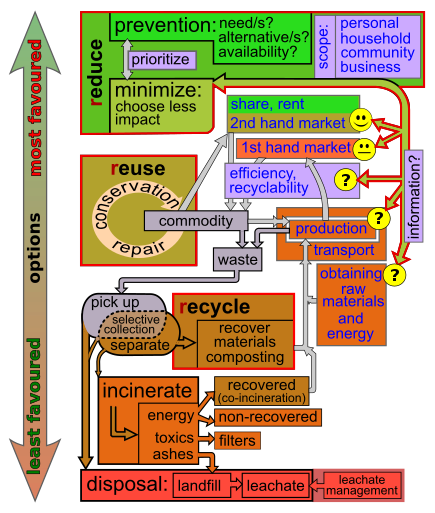Courtesy : Architects, engineers and environmental consultants Entrepreneur
Financial models
In most developed countries, domestic waste disposal is funded from a national or local tax which may be related to income, or property values. Commercial and industrial waste disposal is typically charged for as a commercial service, often as an integrated charge which includes disposal costs. This practice may encourage disposal contractors to opt for the cheapest disposal option such as landfill rather than the environmentally best solution such as re-use and recycling. # ISO certification in India
Financing of solid waste management projects can be overwhelming for the city government, especially if the government see it as an important service they should render to the citizen. Donors and grants are a funding mechanism that is dependent on the interest of the donor organization. as much as it is a good way to develop a city’s waste management infrastructure, attracting and utilizing grants is solely reliant on what the donor considers as important. Therefore, it may be a challenge for a city government to dictate how the funds should be distributed among the various aspect of waste management.
In some areas like Taipei, the city government charges its households and industries for the volume of rubbish they produce. Waste is collected by the city council only if it is put in government issued rubbish bags. This policy has successfully reduced the amount of waste the city produces and increased the recycling rate. # ISO certification in India
Another example from a country that enforces a waste tax is Italy. Instead of using government issued bags like Taipei, the tax is based on two rates: fixed and variable. The fixed rate is based on the size of the house while the variable is determined by the amount of people living in the house.
The World Bank finances and advises on solid waste management projects using a diverse suite of products and services, including traditional loans, results-based financing, development policy financing, and technical advisory. World Bank-financed waste management projects usually address the entire lifecycle of waste right from the point of generation to collection and transportation, and finally treatment and disposal.# ISO certification in India
Disposal methods
Landfill
This section is an excerpt from Landfill.
A landfill site, also known as a tip, dump, rubbish dump, garbage dump, or dumping ground, is a site for the disposal of waste materials. Landfill is the oldest and most common form of waste disposal, although the systematic burial of the waste with daily, intermediate and final covers only began in the 1940s. In the past, refuse was simply left in piles or thrown into pits; in archeology this is known as a midden.Some landfill sites are used for waste management purposes, such as temporary storage, consolidation and transfer, or for various stages of processing waste material, such as sorting, treatment, or recycling. Unless they are stabilized, landfills may undergo severe shaking or soil liquefaction of the ground during an earthquake. Once full, the area over a landfill site may be reclaimed for other uses. # ISO certification in India

A landfill compaction vehicle in action.

Spittelau incineration plant in Vienna
Incineration
Main article: Incineration

Tarastejärvi Incineration Plant in Tampere, Finland
Incineration is a disposal method in which solid organic wastes are subjected to combustion so as to convert them into residue and gaseous products. This method is useful for disposal of both municipal solid waste and solid residue from waste water treatment. This process reduces the volumes of solid waste by 80 to 95 percent. Incineration and other high temperature waste treatment systems are sometimes described as “thermal treatment”. Incinerators convert waste materials into heat, gas, steam, and ash.# ISO certification in India
Incineration is carried out both on a small scale by individuals and on a large scale by industry. It is used to dispose of solid, liquid and gaseous waste. It is recognized as a practical method of disposing of certain hazardous waste materials (such as biological medical waste). Incineration is a controversial method of waste disposal, due to issues such as emission of gaseous pollutants including substantial quantities of carbon dioxide.# ISO certification in India
Incineration is common in countries such as Japan where land is more scarce, as the facilities generally do not require as much area as landfills. Waste-to-energy (WtE) or energy-from-waste (EfW) are broad terms for facilities that burn waste in a furnace or boiler to generate heat, steam or electricity. Combustion in an incinerator is not always perfect and there have been concerns about pollutants in gaseous emissions from incinerator stacks. Particular concern has focused on some very persistent organic compounds such as dioxins, furans, and PAHs, which may be created and which may have serious environmental consequences and some heavy metals such as mercury and lead which can be volatilized in the combustion process..# ISO certification in India

